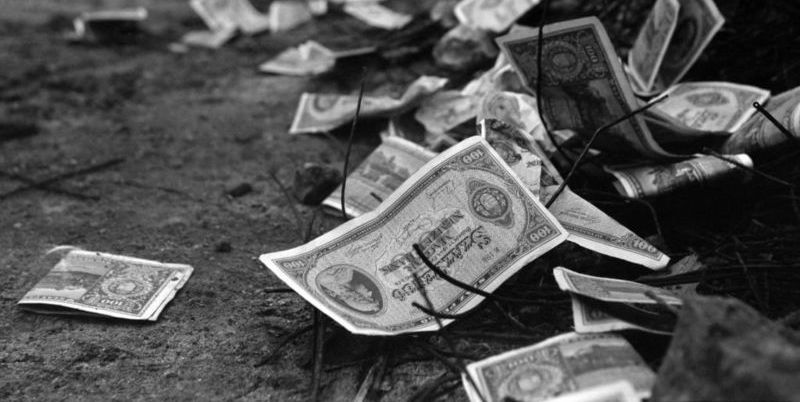When one thinks of a distant history of very high inflation – that is, of a general increase in the level of prices – that of Germany after the First World War always comes to mind. Indeed it is the most famous and most studied episode, but it is not the most serious case of inflation in history, which is instead that of Hungary in 1946, when prices increased enormously and doubled on average every 15 hours, reaching theoretical value of 41,900,000,000,000,000 percent on an annual basis.
In the twentieth century these episodes of very high price instability were more frequent: monetary policy was not independent and central banks often put themselves at the service of governments to finance their expenses. This practice is called “debt monetization” and has been gradually abandoned by advanced economies due to all the distortions it entails, including a very high probability of creating inflation. Very simplistically, printing money is like “doping” the economy, which grows because the government has financed public spending thanks to specially printed money, and not thanks to a system that grows and pays more and more taxes in proportion. The currency then gradually loses value and it takes more and more to buy the same things. This is exactly what happened in Hungary in 1946.
Even before that, the country was accustomed to episodes of violent inflation. Having become an independent country after the end of the First World War, Hungary had emerged as a loser and with devastated finances. She had therefore started printing money to try to create money out of nothing to cover her budget gaps. Its currency thus lost a lot of value: before the war it took 5 crowns to get a US dollar, while in 1924 it took 70 thousand. Thus was created the gapa new currency with more valuable single banknotes: in 1926 a gap it was worth 12,500 crowns.
During most of World War II Hungary was spared much destruction. But in 1944 its territory turned into a battlefield between Russia and Germany: half of Hungary’s industrial capacity was essentially destroyed, almost all businesses were significantly damaged, and infrastructure was razed to the ground.
In general, the war economy already brings higher prices: the industries are at a standstill, because they have been destroyed or reconverted to the needs of war, there are no farmers to manage the crops, there are no bakers to churn out the bread. There are therefore generally fewer goods in circulation and the prices for this rise.
After the Second World War, to start reconstruction and restart the economy, the Hungarian government flooded the country with money: it financed public works, gave indiscriminate subsidies, financed advantageous loans to companies and banks. All this again by printing money massively, fueling inflation again, despite the fact that prices were already higher than normal for the war.
From the autumn of 1945 prices increased very rapidly: what in September 1945 cost a few hundred gap in July of 1946 it cost billions of billions. At its peak, inflation reached 41,900,000,000,000,000 percent, an unpronounceable figure.
A woman using pengo as fuel for the fireplace (BBC via Getty)
To put this number into measure, in economics, hyperinflation—massive inflation—is defined as annual price increases of more than 50 percent. In recent months and at its peak, inflation in Italy has touched 12 per cent, and it is a fact that already in this way the life of many families and businesses has become more difficult.
– Read also: What is inflation, explained
In Hungary in 1946 average prices doubled roughly every 15 hours. Families effectively lost all their savings, which soon had no value. Wages also couldn’t keep up with rising prices and devaluation gap. Many companies started paying with what they produced: food, sugar, meters of fabric. The black market developed a lot.
Real wages – that is, wages relative to the cost of living – fell by more than 80 percent, and although people had jobs, hyperinflation had made them poor.
There were also considerable logistical problems in daily life: the individual banknotes were no longer worth anything and to buy even basic necessities, many gap, which were also difficult to carry and count. Many merchants began weighing banknotes instead of counting them. The government even stopped collecting taxes because even a single day of late payment made what it collected effectively lose all value.

A wad of pengo being weighed to pay for goods in a Budapest shop in January 1946 (BBC via Getty)
The most practical solution for the government was not to stop printing money but to change the name of the currency. The gap was replaced with the milpengo (equal to one million gap), which in turn was later replaced with the b-pengo (equal to one billion gap) and so on, up to the bill of one billion b-pengo (i.e. a trillion trillion gap), which, however, was never officially put into circulation.
– Read also: Argentina did the same thing not too long ago
The change between one banknote and another was also quite fast, so there were no major restyling works: the banknotes kept their designs and figures and only the colors were changed.
– Read also: Who decides which faces to put on the money?
The only solution for Hungary was to change its currency: in August 1946 it introduced the florin, reducing the previous currency by 29 zeros, and the government undertook to support its value, thus abandoning the policy of very strong monetary expansion carried on until then.
